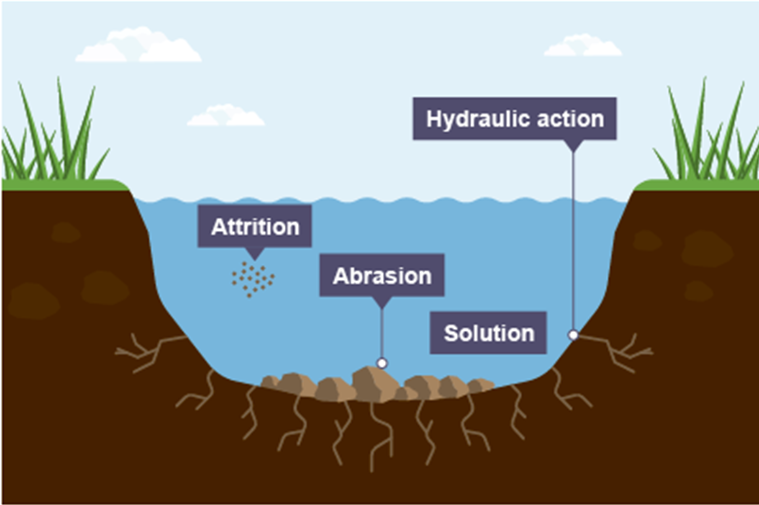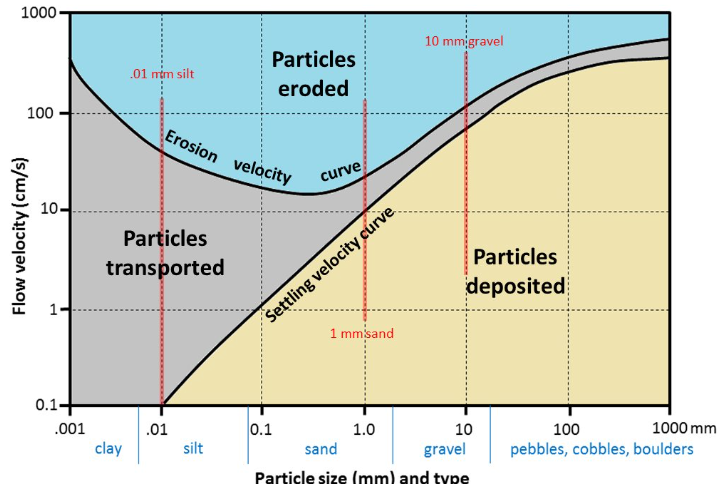Rivers undertake three fluvial processes:
Erosion
Transportation
Deposition
Erosion
Erosion - The process of the river bank and bed being worn away.
The major factor of erosion is the river’s energy level.
The water easily overcomes friction caused by flowing over the bed and banks, speeds up and picks up stones and rocks which then help to erode the channel and valley.

Hydraulic Action - The sheer force of the river hitting against the banks of the river, dislodging loose sediments from the banks. It is a lateral action that creates a U shaped river.
Solution - The river dissolves soluble materials into the river.
Abrasion - The sediments collide with each other and reduce in size.
Attrition - Small particles like sand, silt or gravel cause undercutting as they scour the bed and banks.
Transportation
Suspension - Fine material such as clay and sediment is carried by the river
Solution - Dissolved minerals are carried in the river.
Traction - Large boulders and pebbles are rolled along the river bed.
Saltation - Small stones, pebbles and silt bounces along the river bed.
Deposition
When rivers reach their base level ( the lowest point down to which they flow [a lake or the sea]), they stop flowing, lose energy and deposit the load particles they have been carrying on the seafloor or lake bed.
 If the water is shallow and calm, these deposits will build up in layers until they reach the water surface to create new land; a delta is formed.
If the water is shallow and calm, these deposits will build up in layers until they reach the water surface to create new land; a delta is formed.
River’s also deposit load particles over their surrounding valleys when they flood creating flood plains.
 Note
Note Studied by 157 people
Studied by 157 people Note
Note Studied by 58 people
Studied by 58 people Note
Note Studied by 5 people
Studied by 5 people Note
Note Studied by 10 people
Studied by 10 people Note
Note Studied by 14 people
Studied by 14 people Note
Note Studied by 18 people
Studied by 18 people Knowt
Knowt
 If the water is shallow and calm, these deposits will build up in layers until they reach the water surface to create new land; a delta is formed.
If the water is shallow and calm, these deposits will build up in layers until they reach the water surface to create new land; a delta is formed.